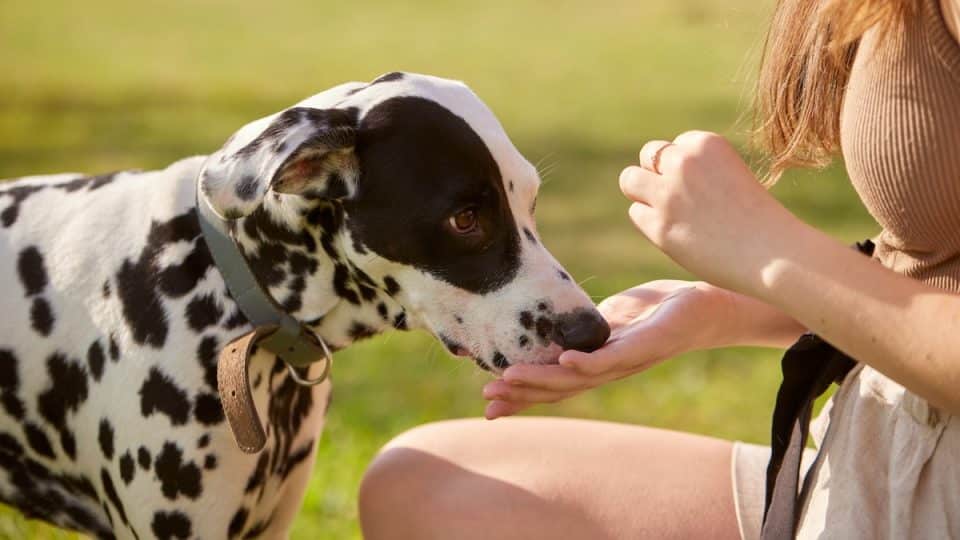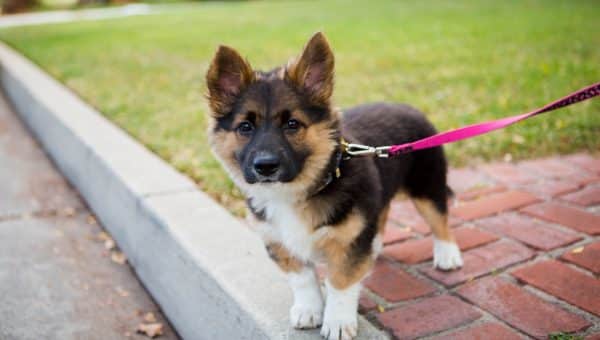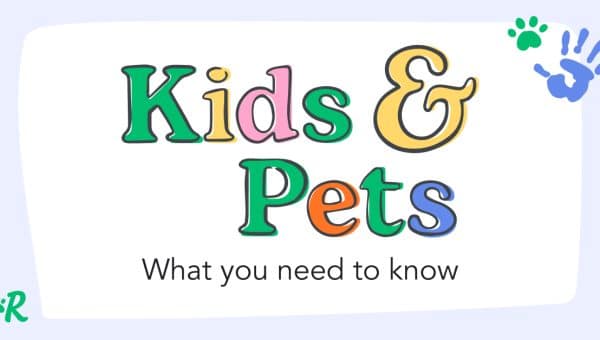- Not a substitute for professional veterinary help.
There are lots of good reasons to consider changing a dog’s name—like adopting an adult from a shelter, bringing home a puppy who already has a name from a breeder, or rescuing a pup who may have a negative association with their existing name.
Since a dog’s name is arguably one of the most important cues they’ll know, we spoke with pet professionals Shoshi Parks, Ph.D., a certified professional dog trainer, and Dr. Sabrina Kong, DVM and staff veterinary writer at WeLoveDoodles, to learn when it’s okay to change a pet’s name and how to go about it.
When Is It Okay To Change Your Dog’s Name?
When asked whether it’s okay to change a dog’s name, pet experts give this choice a thumbs up under most circumstances.
“In my opinion, as a professional dog trainer, nine out of ten times, it’s no problem to change your new adoptee’s name,” says Parks. “Most shelters give dogs a new name when they enter the facility, so if your pup only spent a few weeks there, chances are they never really got to know their shelter name anyway.”
The same is true when bringing a new puppy home from a breeder. “They were probably given a name at birth, but unless you are buying a working dog, show dog, or service dog, they probably haven’t had a lot of experience responding to their names,” notes Parks. “Changing it to something new on day one shouldn’t cause any real issues.”
Dr. Kong agrees with this assessment. “Absolutely, you can change a dog’s name, and I’ve walked numerous owners through this process, blending patience with a sprinkle of excitement,” she says.
To recap, you may want to consider changing your dog’s name if:
- You adopted a rescue (adult or puppy) with a shelter name
- You brought home a new puppy from a breeder with a litter name
- You adopted a dog that has a negative association with their name
- You have a dog that does not respond to their name
When shouldn’t you change a dog’s name?
There will be a few instances, though, in which keeping your dog’s original name is prudent. Parks recommends that if a dog was surrendered after years of being in a stable and loving home, it might be best to consider keeping their original name or naming them something phonetically similar.
She adds that if you’re adopting or buying a working or service dog, they may already have a lot of experience responding to their name and associate it with important cues. If this is the case, keeping their original name is usually the best path forward so there aren’t any interruptions in training.
In short, you might not want to change your dog’s name if:
- You adopted a working or service dog who already has a lot of experience responding to their name
- You adopted an owner-surrendered dog with a positive history of their current name

David Baileys via iStock
How To Teach a New Name
The easiest way to teach your dog their new name is to make it meaningful and valuable. “When picking out a new name, I often suggest something that resonates with you and is easy for your dog to recognize—short, snappy names with a clear vowel sound at the end tend to catch their attention best,” says Dr. Kong.
Both our pet experts recommend positive reinforcement training as the best method to teach your pup their new name. “The real magic happens with positive reinforcement,” Dr. Kong affirms. “Imagine this: you call out their new name, and the moment they glance your way—bam!—they’re hit with a treat or a cuddle. It’s like telling them, ‘Hey, every time you hear this sound, something great happens!'”
Parks agrees, adding, “If you’ve chosen to name your dog Fido and every time you say it, a treat or a toy follows immediately behind, your dog will begin listening for that word in short order.”
When using positive reinforcement, Dr. Kong notes that staying consistent is paramount to success. “Consistency is your best friend here,” she says. “Everyone in the household must be on board, using the new name and ditching the old one to avoid confusing your furry friend.”
According to Parks, games are a great way to positively teach your dog a new name (as shown in three of her favorites below). She recommends playing in short bursts of three to ten minutes a few times each day.
Game 1: The original name game
Say your dog’s new name in a happy tone. When they look at you, mark it with a “yes!” or a clicker, then reward them with a treat. Repeat, repeat, repeat.
Just be aware of one pitfall: if you say your dog’s new name and they don’t look at you immediately, do not keep saying their name. You’ll lessen the value of the name if you keep repeating it without engagement and interaction. Instead, make an exciting noise—kissy sounds, robot beeps, whistles, baby talk—to get their attention. Once your dog looks at you, mark and reward.
It’s also worth noting that, especially in the beginning, your dog doesn’t necessarily need to look you right in the eyes, nor do they need to come toward you. These behaviors are great bonuses, but they aren’t the main goal at this point. All you need your pup to do is turn their head toward you; their body can be in any position (standing, sitting, or down).
Game 2: The name-change name game
If your dog is familiar with the name they had when you adopted them and responds to it quickly, then a better strategy might be slowly introducing a new name. To do this, try the “name-change name-game” instead. Here’s how you play.
- Say your dog’s original name in a happy tone. When they look at you, mark it with a “yes!” or a clicker, then reward them with a treat. Repeat five times.
- Begin introducing their new name. Say the new name first, then follow it with their old name, pausing briefly between the two. Mark and reward your dog when they look at you. Repeat at least five times.
- Next, drop their original name. Say the new name and mark and reward when they look at you. Repeat, repeat, repeat.
Game 3: The everyday name-change approach
Another approach to teaching a dog who knows their original name how to respond to a new name is to alternate both names in daily life.
When speaking to your dog or asking them to respond to you, use their original name half of the time and their new name the other half. As they respond more and more quickly to their new name, use the old name less frequently, eventually phasing it out over several days or weeks.
For best results, try combining this approach with short name game sessions. With these tools, you should be able to help your dog happily adapt to their new name.

Jan Rozehnal via iStock
Troubleshooting Issues With Renaming Your Dog
Changing a dog’s name takes time. Even with the best-laid plans and information at your fingertips, you may run into some bumps in the road.
“In my experience, the biggest hiccup usually comes from inconsistency or expecting instant results,” says Dr. Kong. “If you find your dog isn’t catching on as quickly as you’d hoped, don’t fret. Keep at it, maintaining a cheerful tone and those positive associations.”
If you or your dog are getting frustrated or anxious with practice, it’s best to stop and take a break. You may also want to reevaluate your rewards and switch to using more high-value treats, like pieces of hot dog, bacon, or cheese (or your dog’s favorite motivational treat), to keep them interested and excited.
It’s also important to be realistic about how quickly your pup learns their new name. While you may have a goal date in mind, remember to be patient and enjoy the journey. “Changing a dog’s name isn’t just about getting them to respond to something new,” says Dr. Kong. “It’s an opportunity to strengthen your bond and ensure they feel as loved and secure with their new name as they did with their old one.”






